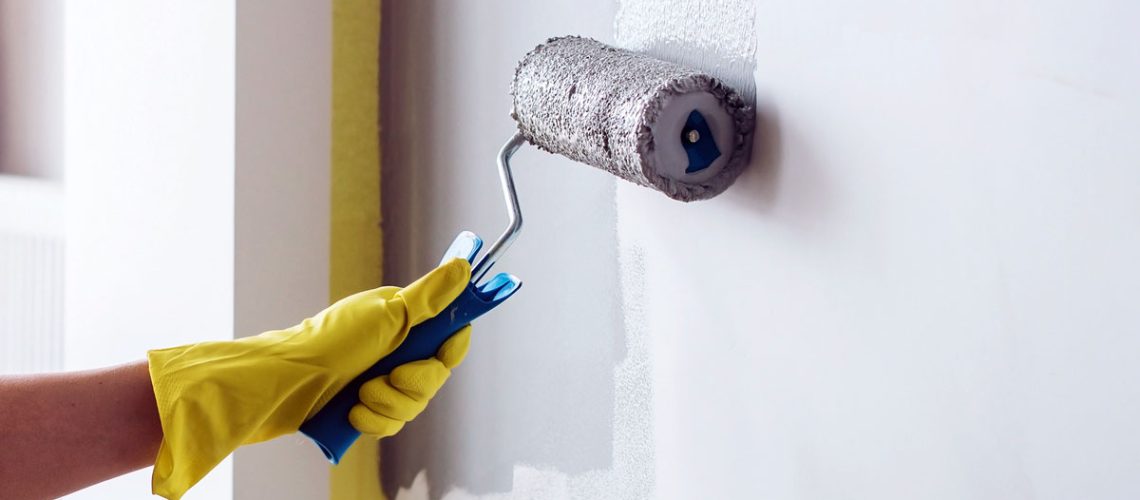Yes, eggshell paint can be touched up, but it requires careful preparation and execution to achieve a seamless result. Before applying new paint, moisten and sand the surface to promote better adhesion. Use a paintbrush or a mini roller to apply the paint, and then stipple and feather the edges to blend the new paint with the existing finish. Although it can be challenging to touch up eggshell paint without repainting the entire wall, following these steps can help ensure a successful outcome.
Why is Eggshell Paint Difficult to Touchup?
Eggshell paint is difficult to touch up for a couple of reasons. First, the colour of the paint on the wall tends to fade over time as the paint cures and is exposed to environmental factors. This leads to a noticeable difference between the existing paint on the wall and the fresh paint from the can. Second, eggshell paint is susceptible to paint flashing, which is the visible unevenness in sheen or gloss after a paint job. Flashing can occur due to inconsistent paint application, especially when using manual methods like brushes or rollers. As a result, these factors make it challenging to seamlessly touch up eggshell paint and maintain a uniform appearance.
So, can eggshell paint be touched up without having to repaint the whole wall? The answer is yes, but it requires careful planning and execution.
Preparing the Surface: The Importance of Sanding
Eggshell finishes have a slight sheen that can interfere with paint adhesion when repainting. To overcome this issue, it’s essential to sand the eggshell surface before applying a new coat of paint. Sanding creates a rougher surface, promoting better adhesion and ensuring a smooth, consistent finish.
The Art of Touching Up Eggshell Paint
While touching up eggshell paint can be tricky, it’s not impossible. Following these steps can increase your chances of success:
- Get your drop cloth ready: Be sure to have a properly washed drop cloth on hand and lay it at the bottom of the wall, door or roof being touched up.
- Moisten the wall: Before applying new paint, moisten the area with a wrung-out terry-cloth towel. This step helps prepare the surface for the touch-up.
- Stir the paint: Make sure to stir the paint thoroughly before using it. This ensures even colour distribution and avoids potential splotches.
- Choose the right tools: Use a paintbrush or a 4-inch mini roller (sometimes called a hot-dog roller) for touch-ups. Avoid using a full-sized roller, as it may lead to over-application and the need to repaint the entire wall.
- Apply the paint: Carefully brush or roll the paint onto the area requiring a touch-up. Be mindful of the amount of paint you use, as less is often more when it comes to touch-ups.
- Stipple and feather: After applying the paint, use the brush to stipple or dab the area, gradually feathering it out to blend the new paint with the existing finish. Lightening your touch as you fan out helps achieve a more seamless result.
It’s worth noting that matte finishes and lighter colours are generally easier to touch up compared to eggshell or darker hues.
Pro tip on how to touchup Eggshell paint from a professional painter
After a pro tip from a skilled house painter? You’re in luck, we have one right here for you: Consider adding some Floetrol to the paint and then dabbing it onto the area with a rag. Floetrol is particularly helpful when touching up faux finishes or when a homeowner wants to move a picture hanger after the painting job is complete. This additive slightly reduces the opacity and sheen of the paint, making the touch-up less noticeable and preventing it from looking like an extra coat.
Choosing the Right Sheen for Your Walls
When selecting a paint sheen for your home’s interior walls, keep in mind that eggshell, satin, and semi-gloss finishes may require more effort for touch-ups. Although these sheens are washable, they tend to flash, or reveal inconsistencies, when touched up. If you anticipate the need for frequent touch-ups, you may want to consider a matte finish instead.
In conclusion, touching up eggshell paint can be challenging but not impossible. With the right preparation, tools, and technique, you can achieve a near-seamless result without repainting the entire wall. However, when selecting a paint sheen, consider the potential need for touch-ups and choose a finish that best suits your requirements and preferences.

